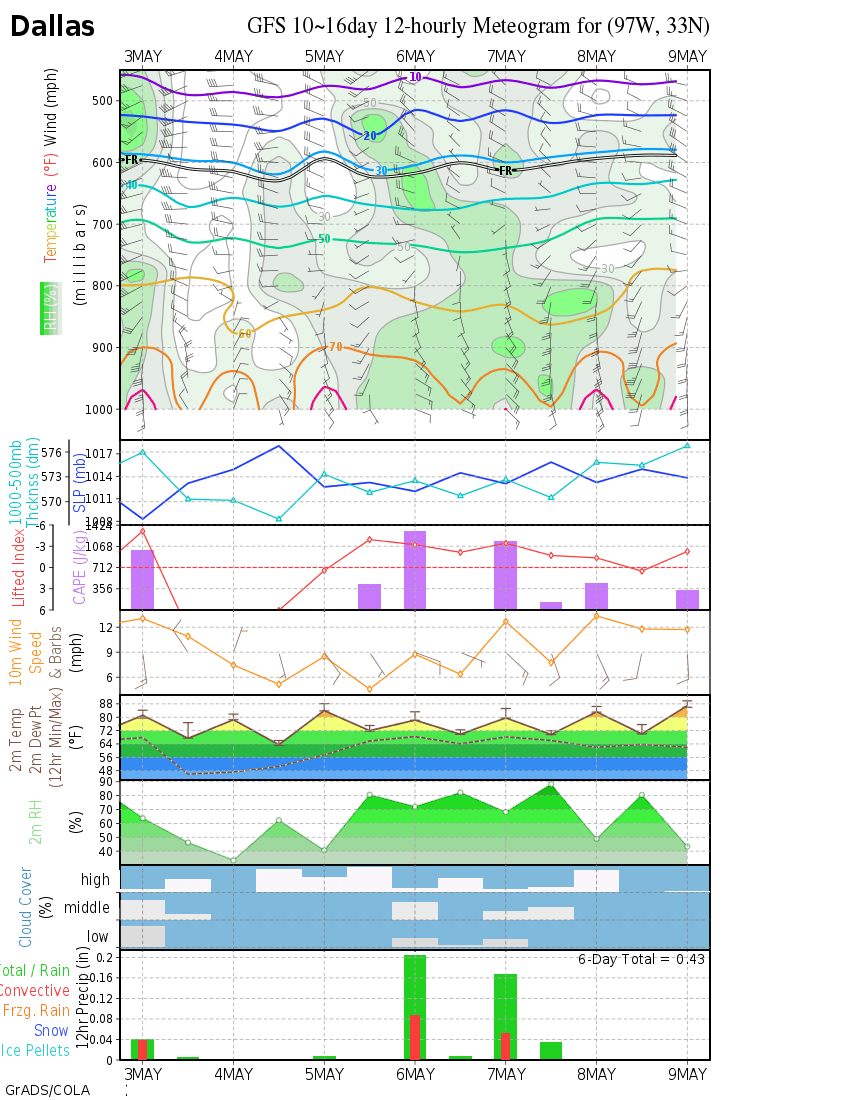00z GFS continues to show a little bit of winter weather in Oklahoma next Tuesday on the back side of a low...
132 hrs - Tues. morninghttp://www.nco.ncep.noaa.gov/pmb/nwprod ... p_132l.gifhttp://www.nco.ncep.noaa.gov/pmb/nwprod ... p_132l.gifThis makes 3 runs in a row that it has shown the possibility of winter precipitation early next week. Unfortunately, it looks to be a brief and fairly light occurrence, probably not amounting to anything more than a dusting of snow or sleet (if even).
----------------------------------------------------------------------------
Right behind this little event comes something even more interesting..
By hour 156, the GFS is driving a shot of canadian air down the plains with snow flying in Kansas and Nebraska on Wednesday morning:
http://www.nco.ncep.noaa.gov/pmb/nwprod ... n_156l.gifBy hour 162 (Wednesday afternoon), this classic blue-norther is pushing into Oklahoma. Afternoon temperatures in OKC will likely fall below freezing as the front passes:
http://www.nco.ncep.noaa.gov/pmb/nwprod ... n_162l.gifThe cold airmass then pushes into central/NE Texas by hour 174 before trying to stall out (which is a classic GFS error with this kind of airmass in the long range):
http://www.nco.ncep.noaa.gov/pmb/nwprod ... n_174l.gifFor the most part, this model run takes most of the coldest air east of the plains, but it
has started to gradually shift back westward with the cold in recent runs. Also, as we all know, the GFS doesn't always do too well with this kind of airmass in the long range. It is biased toward stalling cold in the southern plains, which typically doesn't happen. If we assume the same error is being made here, then it is safe to say that Oklahoma and Texas could be in for some of their coldest readings of the year come mid next week. Also, if you are in the east, then I would watch this one very closely as well. If this model run is right, then you guys could be in for
bitter cold air, including the possibility of
sub-zero readings in parts of the Ohio valley!

Brrr...
-----------------------------------------------------------------------------------
And then behind the above event comes something even
more interesting (lol!)...
This is now considered to be the long range, and not as accurate, but we will look at it anyway.
At hour 216, another arctic airmass is plunging southward and meeting up with moisture. Winter precipitation is the result across the plains:
http://www.nco.ncep.noaa.gov/pmb/nwprod ... n_216l.gifBy hour 228, the winter precipitation reaches Texas:
http://www.nco.ncep.noaa.gov/pmb/nwprod ... n_228l.gifThe winter precipitation then continues in the southern plains through hour 252. At the same time, the east coast is also getting slammed:
http://www.nco.ncep.noaa.gov/pmb/nwprod ... n_252l.gif-----------------------------------------------------------------------------------
Overall, this is one very exciting (and cold) GFS run!


 The posts in this forum are NOT official forecast and should not be used as such. They are just the opinion of the poster and may or may not be backed by sound meteorological data. They are NOT endorsed by any professional institution or
The posts in this forum are NOT official forecast and should not be used as such. They are just the opinion of the poster and may or may not be backed by sound meteorological data. They are NOT endorsed by any professional institution or 










